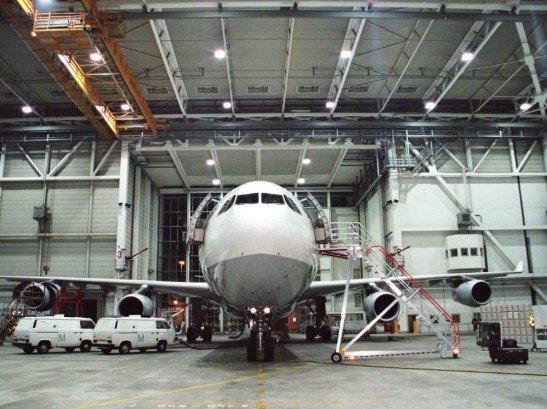Raising the Bar: The Technology Behind Aircraft Jacks

In the realm of aviation, precision and safety are of paramount importance. Regarding the maintenance or service of airplanes, the need for tools such as aviation jacks cannot be emphasized. Any airside operation depends critically on the heavy-duty equipment used to lift and steady aircraft during repair. Aviation jacks are designed to meet the rigorous demands of an industry that values efficiency, durability, and uncompromising safety. Operating in challenging environments, these jacks bear the substantial weight of aircraft with exceptional reliability. With advancements in technology, modern airplane jacks now feature sophisticated components that enhance their performance, ease of use, and overall safety, ensuring they meet the evolving needs of the aviation sector.
The Part Materials Play in Aircraft Jack Design
The effectiveness of precision-engineered tools and aircraft jacks largely depends on the materials they are made from. Given that these jacks can weigh several tons, the ability to safely support an aircraft relies on using strong, lightweight materials that deliver both durability and strength. Modern aircraft jacks commonly use high-strength steel alloys, which provide the necessary tensile strength to handle heavy loads without adding unnecessary weight.
In addition, advanced composite materials are increasingly used to boost performance and reduce weight, all while maintaining durability. These materials are ideal for aircraft maintenance facilities, as they allow jacks to withstand immense pressure and harsh conditions such as high humidity, temperature fluctuations, and exposure to corrosive chemicals. The design of these jacks also emphasizes fatigue resistance, ensuring that, despite frequent use in high-stress environments, the materials can bear continuous loads without cracking or degrading over time.
Hydraulic Systems
Modern airplane jacks mostly depend on hydraulic systems to provide the required lifting force. Using fluid pressure to provide strong lifting force, hydraulic technology lets jacks run with great efficiency and the least human effort. These very accurate technologies not only work but also provide the means to lift airplanes with deliberate, slow motions.
Usually, oil-based hydraulic fluid is pushed via a set of cylinders and valves to provide a smooth, consistent lift that can be precisely changed to suit various aircraft types and layouts. With the emergence of automated control systems that provide more accuracy in raising and lowering aircraft, hydraulic aircraft jacks’ engineering has developed dramatically recently. These technologies guarantee that the aircraft is always raised evenly and securely by the use of sensors and feedback mechanisms that let the operator monitor and modify the jack’s performance in real time.
Safety and Stability
One of the most important considerations of aircraft jack design is stability, as even the smallest movement or wobble in the jack could have disastrous results. Making sure the jack offers a solid basis for an aircraft calls for sophisticated engineering methods free from tipping, sliding, or any other instability problems. Modern airplane jacks include broad base designs, stabilizing legs, and anti-slip systems, among other elements to improve stability.
These characteristics more fairly distribute the weight of the aircraft, therefore lowering the possibility of instability either during lifting or during stationary operation. Including electronic monitoring systems is one of the most recent developments in jack stability. These systems find any little changes in the load distribution by the use of sensors buried in the base of the jack. Should any instability be found, the system notifies the operator right away so that she may act to preserve safe lifting circumstances.
Customizing Aircraft Jacks to Satisfy Various Operational Needs
One-size-fits-all answers are not found in aircraft jacks. Design and choice of a suitable jack must take into account the weight distributions, landing gear arrangements, and maintenance needs of different aircraft kinds. Since operators have to make sure they have the appropriate equipment for a variety of aircraft, the customizing of aircraft jacks to fit particular operational demands has grown to be a crucial concern of the business.
Usually including modular jack systems, where components may be switched out or changed based on aircraft size and requirements, this customizing allows for flexible systems to change the lifting height, weight capacity, and stability characteristics according to the particular operating demand.
Developing Trends in Aircraft Jack Innovation
The technology behind airplane jacks changes as the aviation sector develops. Emerging trends center on boosting sustainability, raising automation, and sharpening user experience. The way smart technology is becoming included in airplane jacks is among the most fascinating advancements. Sensors, data analytics tools, and communication systems on these “smart jacks” enable them to communicate with other devices in the maintenance surroundings. Smart jacks, for instance, may automatically change their lifting settings depending on the aircraft’s real-time data, therefore lowering human mistake risk and increasing the general maintenance process efficiency.
Read also: The Benefits of Deep Cleaning Services for Commercial Spaces
Conclusion
As airplane maintenance becomes more complex and technology-driven, the equipment supporting this process must evolve as well. Aircraft jacks are no exception to this trend. With ongoing advancements in materials, hydraulic stability, customization, and technology, the future of aircraft jacks is being transformed. The next generation of jacks promises not only improved performance and safety but also a more sustainable and efficient way to maintain the machines that keep the world moving.





